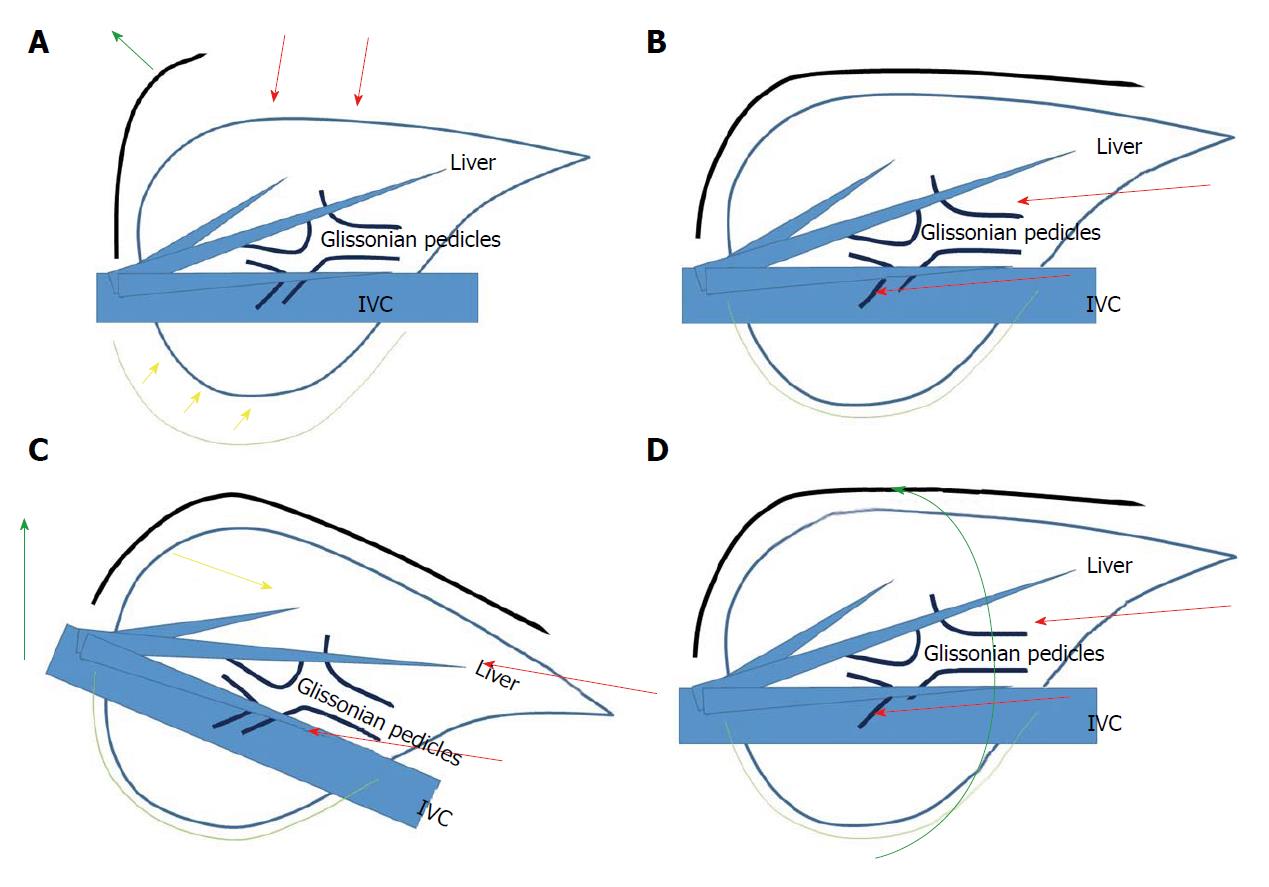Copyright
©The Author(s) 2018.
World J Hepatol. Jul 27, 2018; 10(7): 479-484
Published online Jul 27, 2018. doi: 10.4254/wjh.v10.i7.479
Published online Jul 27, 2018. doi: 10.4254/wjh.v10.i7.479
Figure 1 Schema of open liver resection (A), laparoscopic liver resection (B), position change in laparoscopic liver resection (tilting the bed for head-up position, C) and position change in laparoscopic liver resection (rotation from supine to semi-prone position, D).
Red arrows indicate the directions of the view and manipulation in each approach. A: In the open approach, the subcostal cage containing the liver is opened with a large subcostal incision, and instruments are used to lift the costal arch up. The liver is dissected and mobilized (picked up) from the retroperitoneum; B: In the laparoscopic caudal approach, the laparoscope and forceps are placed into the subcostal cage from caudal direction, and surgery is performed with minimal alteration and destruction of the associated structures; C and D: In the laparoscopic approach, the same surgical view under position changes (tilting the bed and rotation of the patient’s body), acquired by the adjustments of laparoscope’s positioning and rotation, allows for handling large-volume liver/tumor by postural changes.
- Citation: Morise Z. Status and perspective of laparoscopic repeat liver resection. World J Hepatol 2018; 10(7): 479-484
- URL: https://www.wjgnet.com/1948-5182/full/v10/i7/479.htm
- DOI: https://dx.doi.org/10.4254/wjh.v10.i7.479









